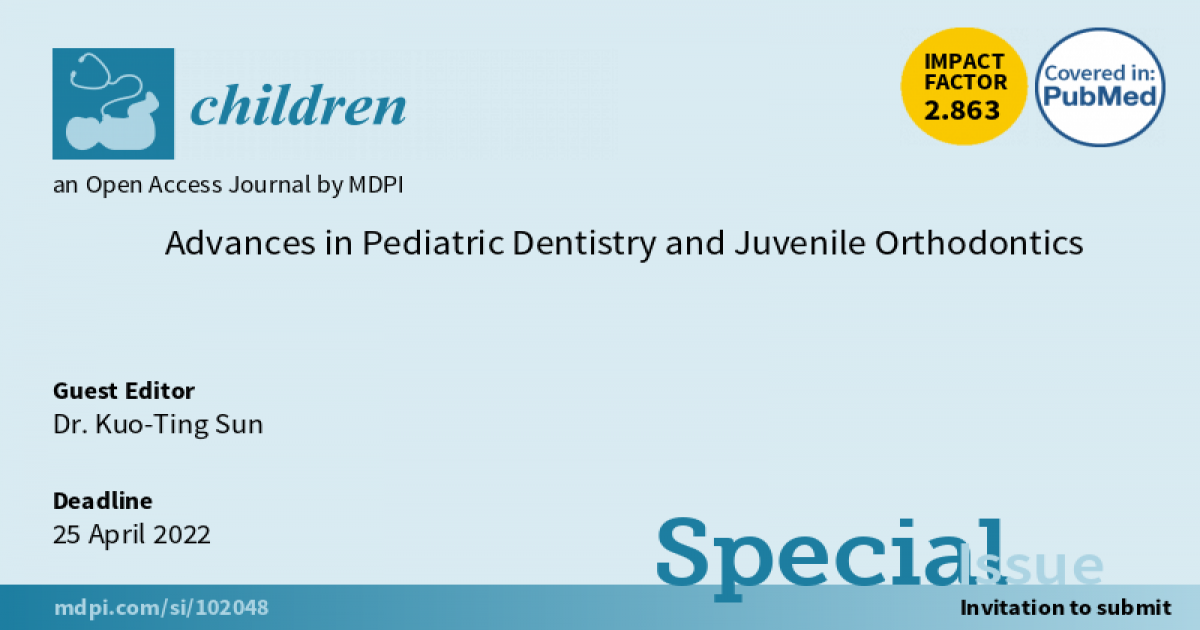Advances in Pediatric Dentistry and Juvenile Orthodontics
A special issue of Children (ISSN 2227-9067). This special issue belongs to the section "Pediatric Dentistry & Oral Medicine".
Deadline for manuscript submissions: closed (25 April 2022) | Viewed by 10848

Special Issue Editor
Special Issue Information
Dear Colleagues,
This Special Issue involves studies on treating babies, children, and teenagers with a wide range of complex medical dental conditions. Pediatric dentistry is dedicated to the oral health of children from infancy through their teen years. Orthodontic irregularities may be present at birth or develop during toddlerhood or early childhood. Crooked teeth hamper self-esteem and make good oral homecare difficult, whereas straight teeth help minimize the risk of tooth decay and childhood periodontal disease.
Children is publishing this Special Issue to create a collection of papers on pediatric dentistry and juvenile orthodontics. The aim is to build a community of authors and readers to discuss the latest research and develop new ideas and research directions in this particular field. Papers published in the Special Issue will be collected together on a dedicated page of the journal website.
Dr. Kuo-Ting Sun
Guest Editor
Manuscript Submission Information
Manuscripts should be submitted online at www.mdpi.com by registering and logging in to this website. Once you are registered, click here to go to the submission form. Manuscripts can be submitted until the deadline. All submissions that pass pre-check are peer-reviewed. Accepted papers will be published continuously in the journal (as soon as accepted) and will be listed together on the special issue website. Research articles, review articles as well as short communications are invited. For planned papers, a title and short abstract (about 100 words) can be sent to the Editorial Office for announcement on this website.
Submitted manuscripts should not have been published previously, nor be under consideration for publication elsewhere (except conference proceedings papers). All manuscripts are thoroughly refereed through a single-blind peer-review process. A guide for authors and other relevant information for submission of manuscripts is available on the Instructions for Authors page. Children is an international peer-reviewed open access monthly journal published by MDPI.
Please visit the Instructions for Authors page before submitting a manuscript. The Article Processing Charge (APC) for publication in this open access journal is 2400 CHF (Swiss Francs). Submitted papers should be well formatted and use good English. Authors may use MDPI's English editing service prior to publication or during author revisions.
Keywords
- caries
- primary dentition
- mixed dentition
- functional appliance
- pulp treatment






